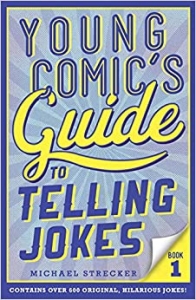Guest Post: CMO Skills Essential for Marketing
Since our Say It For You writers often work under the direction of a company’s Chief Marketing Officer, this insightful guest post about effective CMOs is of interest. Author Dana Harris is a writer and a freelance marketing specialist. She has been writing articles on marketing tips and strategies for over five years.
CMOs are invaluable members of any company. However, their role constantly grows and transforms due to the continuous evolution of the marketing world. From new tactics to the latest trends, there’s no shortage of skills and tools for marketers to master. But which strengths are truly essential for a chief marketing officer? This blog discusses what you need in a good CMO.
This Chief Marketing Officer resume guide details the top five common traits of a competent CMO:
- good leader
- quick adapter
- customer-centered
- great communicator
- excellent data analyzer
A CMO needs each of these fundamental skills to fulfill all of the responsibilities of their position.
However, these are not the only desirable traits. A CMO’s role is so influential that it can make or break a company’s brand image, sales, and overall profit. It’s critical to prevent a decline in any of those areas. Here are five more skills your CMO should possess to boost your marketing efforts and impact.
Goal Setting
Knowing how to set goals is a significant marketing skill. As the leader of a company’s marketing department, it’s certainly a must-have skill for a CMO. They should know how to implement marketing tactics that align with the company’s goals. Not only that, they should continually aim for a stronger brand and a greater product reach. Even the best marketing strategy risks failure with no guiding goals in mind.
Understanding of UX & UI
Technology is a critical element for a marketing campaign to reach its full potential. This reason is why a company’s CMO and technical team must work together. However, a CMO with knowledge of basic UX/UI design skills is extremely valuable. These skills allow the CMO to build a consumer experience that supports a company’s marketing goals and strategies. Also, the technical team can achieve much more when the CMO has a basic working knowledge of their design skills.
Creativity and Innovation
The ability to be both creative and innovative is essential in the marketing field. Marketers should constantly look for new methods and inventive ways to execute marketing plans to keep up with the latest trends. A creative CMO has a better understanding of consumers and can deliver a valuable experience to them. The combination of data-driven insight and creative thinking is the perfect recipe for actionable campaigns.
Content Management
Did you know that 94% of consumers go to the internet to research products? People often go to Google to look for information and resources during the purchasing process. This fact shows the importance of content marketing. Content marketing covers the constant development and optimization of blog posts, videos, eBooks, whitepapers, and other content pieces. Content management skills have become essential with so much centered on the internet.
Excellent Storytelling
Every effective marketer should be a good storyteller. They should be able to use data to weave a compelling story and put the company’s name on top. Customers typically buy products based more on emotion than logic. A CMO must appeal to the audience’s emotional side and compel them to buy into the brand. Powerful storytelling speaks into the lives of customers and connects a product directly to a solution. It’s a balance of both emotion and logic.
Wrapping Up
Indeed, a chief marketing officer is a very complex and diverse role that is constantly evolving. Companies seeking a capable CMO shouldn’t overlook these essential skills, and neither should those seeking to be the next CMO. Regardless of marketing or technological advances, these skills will take both the CMO and the company confidently into the future.






Follow us online!